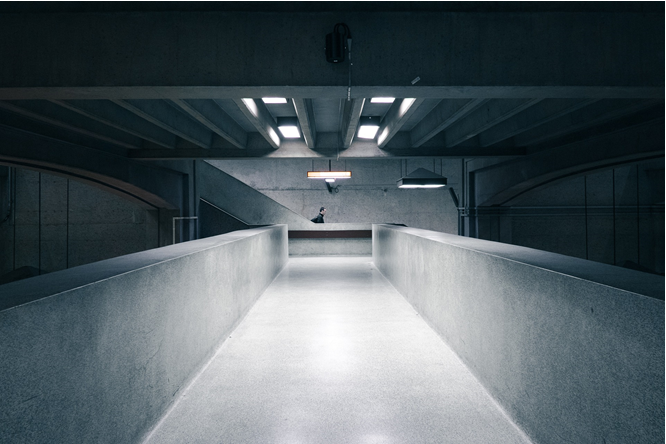A retaining wall is a rigid structure designed to contain some material, generally earth. A precast retaining wall is intended to resist lateral and vertical pressures, produced by the material retained behind it. Its stability is due to its weight and the weight of the material that is on its foundation.
Types of retaining walls
- Solid Retaining Wall – Industrial Buildings
- Precast Modular Retaining Wall
- Mechanically Stabilized Earth Retaining Wall (Reinforced Earth)
- Cantilever Retaining Wall
Retaining Wall – Industrial Buildings
They fulfil the function of supporting the earth pressure, supporting the earth generated by the unevenness of the warehouse and even the natural terrain, since an industrial warehouse is generally elevated with respect to the ground level, to facilitate the trailer loading/unloading.
A suitable design for a retaining wall must consider the following aspects:
- The structural components of the wall must be able to resist the internal shear and moment forces generated by the pressures of the soil.
- It must be safe against lateral displacement.
Building prefabricated retaining walls has the advantages of considerably reducing the times generated in the construction of retaining walls made in a conventional system. Also, they have an apparent smooth finish, equal to the façade finish.
Precast Modular Wall
- They are ideal for building retaining walls and dividing walls for materials, among many other applications.
- The blocks are linked together forming a single element where it is not required to use concrete joints; the wall is immediately usable.
- Another advantage is its versatility since any construction made is fully modular.
- You can easily change the shape of the walls; you can make extensions to any direction as they are practical and easy to assemble and disassemble.
- Likewise, it enables the erection of constructions resistant to natural phenomena.
- The precast modular wall can reach up to six levels without using rods, cement or other joining material.
Many modular systems include:
- Prefabricated modular shoe
- Precast modular block
- Modular half block for the finish
Retaining Wall of Mechanically Stabilized Earth (Reinforced Earth)
- The retaining wall of mechanically stabilized earth is supported by selected fillings (granular) and joined by reinforcements, which can be metallic or plastic strips.
- The reinforcement of such strips gives the whole a tensile strength that the floor itself lacks, with the additional advantage that the mass can be reinforced only or mainly in the most convenient directions.
- It is also based on the placement of plates (prefabricated flakes) of concrete of variable sizes and shapes that are characterized by having a relatively reduced thickness, despite which they allow the execution of high-rise walls that also act as containment of the land.
They are generally used in the road, industrial, mining, railroad, and maritime sectors.
Cantilever Retaining Wall
- They are prefabricated walls in which the panel and the footing are manufactured monolithically forming a single element.
- The constructive elements are pieces of concrete in the shape of an “L” or an inverted “T”, where the elevation and the footing form a single monolithic body.
- It is constructed of precast reinforced concrete and can be built in a reinforced or prestressed system.
- It is not usually used at heights that exceed 10 metres because it requires special measures that tend to be more expensive in soil preparation, materials used and execution.
- They are generally used to contain materials on uneven ground and to contain or separate abrasive materials.
